Fiat 500 vs Peugeot Rifter – Which one offers the better deal?
Everyday use, family trips or long-distance drives – here’s where the differences show.
Discover whether Fiat 500 or Peugeot Rifter fits your lifestyle better.
Here’s where it gets real: The technical differences in detail
Costs and Efficiency: Price and efficiency are often the first things buyers look at. Here it becomes clear which model has the long-term edge – whether at the pump, the plug, or in purchase price.
Fiat 500 has a slightly advantage in terms of price – it starts at 21400 £, while the Peugeot Rifter costs 23800 £. That’s a price difference of around 2400 £.
In terms of energy consumption, the advantage goes to the Fiat 500: with 13 kWh per 100 km, it’s decisively more efficient than the Peugeot Rifter with 18.30 kWh. That’s a difference of about 5.30 kWh.
As for range, the Peugeot Rifter performs barely noticeable better – achieving up to 339 km, about 8 km more than the Fiat 500.
Engine and Performance: Power, torque and acceleration say a lot about how a car feels on the road. This is where you see which model delivers more driving dynamics.
When it comes to engine power, the Peugeot Rifter has a a bit edge – offering 136 HP compared to 118 HP. That’s roughly 18 HP more horsepower.
In acceleration from 0 to 100 km/h, the Fiat 500 is distinct quicker – completing the sprint in 9 s, while the Peugeot Rifter takes 10.80 s. That’s about 1.80 s faster.
In terms of top speed, the Peugeot Rifter performs a bit better – reaching 184 km/h, while the Fiat 500 tops out at 150 km/h. The difference is around 34 km/h.
There’s also a difference in torque: the Peugeot Rifter pulls distinct stronger with 300 Nm compared to 220 Nm. That’s about 80 Nm difference.
Space and Everyday Use: Whether family car or daily driver – which one offers more room, flexibility and comfort?
Seats: Peugeot Rifter offers significantly more seating capacity – 7 vs 4.
In curb weight, the Fiat 500 is to a small extent lighter – 1330 kg compared to 1561 kg. The difference is around 231 kg.
In terms of boot space, the Peugeot Rifter offers significantly more room – 1050 L compared to 185 L. That’s a difference of about 865 L.
In maximum load capacity, the Peugeot Rifter performs convincingly better – up to 3500 L, which is about 2950 L more than the Fiat 500.
When it comes to payload, Peugeot Rifter clearly takes the win – 814 kg compared to 305 kg. That’s a difference of about 509 kg.
Our conclusion: The Peugeot Rifter proves to be is largely superior and thus becomes our DriveDuel Champion!
Overall, Peugeot Rifter is the better all-rounder in this comparison.
Fiat 500
The Fiat 500 is a compact and stylish city car that has captured the hearts of urban drivers with its charming retro design. Its nimble handling and efficient engine make navigating tight city streets a breeze, while its cosy interior offers a surprising amount of comfort and modern technology. The car's iconic silhouette and vibrant colour options ensure it stands out, offering a unique blend of timeless appeal and contemporary flair.
details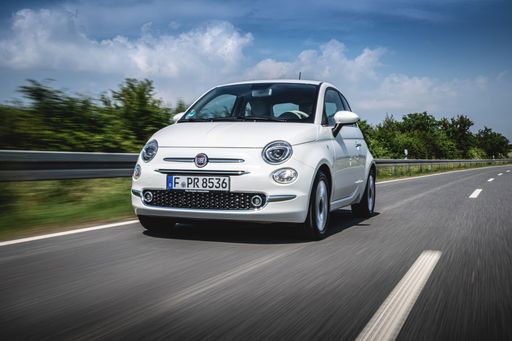 @ media.stellantis.com
@ media.stellantis.com
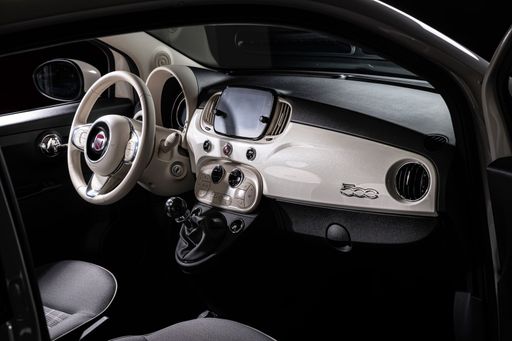 @ media.stellantis.com
@ media.stellantis.com
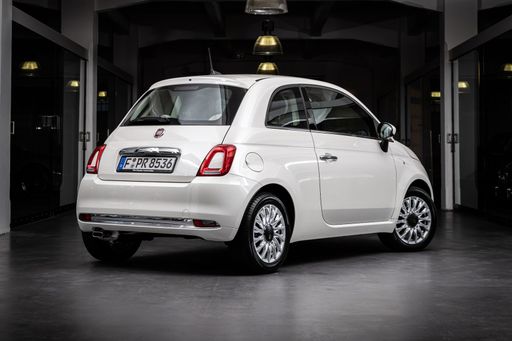 @ media.stellantis.com
@ media.stellantis.com
Peugeot Rifter
Der Peugeot Rifter beeindruckt mit seinem robusten Design und seiner hohen Vielseitigkeit, die ihn ideal für Familien und Outdoor-Abenteuer macht. Der Innenraum ist geräumig gestaltet und bietet zahlreiche innovative Technologien, die den Komfort und die Sicherheit der Insassen erhöhen. Zudem überzeugt der Rifter mit seiner hervorragenden Fahrdynamik, die sowohl in der Stadt als auch auf längeren Strecken für ein angenehmes Fahrerlebnis sorgt.
details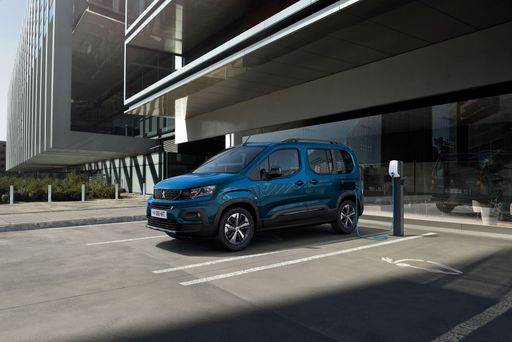 @ media.stellantis.com
@ media.stellantis.com
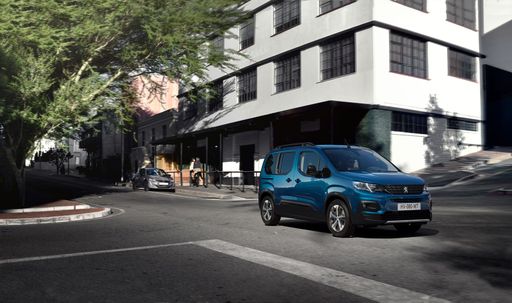 @ media.stellantis.com
@ media.stellantis.com
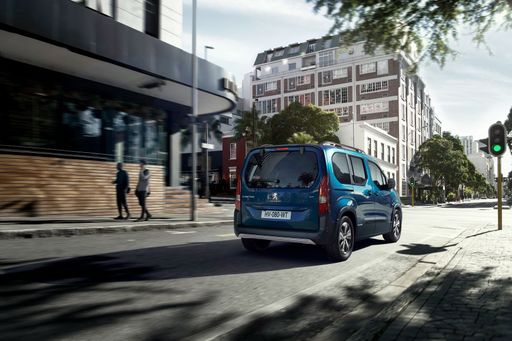 @ media.stellantis.com
@ media.stellantis.com
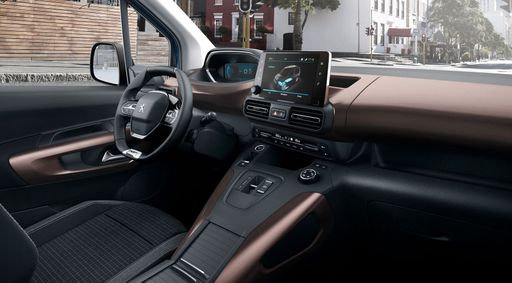 @ media.stellantis.com
@ media.stellantis.com

|

|
|
|
|
Costs and Consumption |
|
|---|---|
|
Price
21400 - 30800 £
|
Price
23800 - 36600 £
|
|
Consumption L/100km
-
|
Consumption L/100km
5.6 - 6 L
|
|
Consumption kWh/100km
13 - 14.7 kWh
|
Consumption kWh/100km
18.3 - 19.1 kWh
|
|
Electric Range
190 - 331 km
|
Electric Range
328 - 339 km
|
|
Battery Capacity
21.3 - 37.3 kWh
|
Battery Capacity
-
|
|
co2
0 g/km
|
co2
0 - 158 g/km
|
|
Fuel tank capacity
-
|
Fuel tank capacity
50 L
|
Dimensions and Body |
|
|---|---|
|
Body Type
Hatchback
|
Body Type
High Roof Estate
|
|
Seats
4
|
Seats
5 - 7
|
|
Doors
3 - 4
|
Doors
4 - 5
|
|
Curb weight
1330 - 1475 kg
|
Curb weight
1561 - 1941 kg
|
|
Trunk capacity
185 L
|
Trunk capacity
322 - 1050 L
|
|
Length
3632 mm
|
Length
4405 - 4755 mm
|
|
Width
1683 mm
|
Width
1848 mm
|
|
Height
1527 mm
|
Height
1818 - 1837 mm
|
|
Max trunk capacity
550 L
|
Max trunk capacity
3000 - 3500 L
|
|
Payload
250 - 305 kg
|
Payload
489 - 814 kg
|
Engine and Performance |
|
|---|---|
|
Engine Type
Electric
|
Engine Type
Electric, Diesel
|
|
Transmission
Automatic
|
Transmission
Automatic, Manuel
|
|
Transmission Detail
Reduction Gearbox
|
Transmission Detail
Reduction Gearbox, Manual Gearbox, Automatic Gearbox
|
|
Drive Type
Front-Wheel Drive
|
Drive Type
Front-Wheel Drive
|
|
Power HP
95 - 118 HP
|
Power HP
102 - 136 HP
|
|
Acceleration 0-100km/h
9 - 9.5 s
|
Acceleration 0-100km/h
10.8 - 13.6 s
|
|
Max Speed
135 - 150 km/h
|
Max Speed
132 - 184 km/h
|
|
Torque
220 Nm
|
Torque
250 - 300 Nm
|
|
Number of Cylinders
-
|
Number of Cylinders
4
|
|
Power kW
70 - 87 kW
|
Power kW
75 - 100 kW
|
|
Engine capacity
-
|
Engine capacity
1499 cm3
|
General |
|
|---|---|
|
Model Year
2023 - 2025
|
Model Year
2024
|
|
CO2 Efficiency Class
A
|
CO2 Efficiency Class
A, E, F
|
|
Brand
Fiat
|
Brand
Peugeot
|
What drivetrain options does the Fiat 500 have?
The Fiat 500 is offered with Front-Wheel Drive.
The prices and data displayed are estimates based on German list prices and may vary by country. This information is not legally binding.
